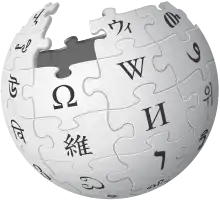concordia diagram
English

A concordia diagram (Wetherill diagram)
Noun
concordia diagram (plural concordia diagrams)
- (geology, geochronology) Any of several types of diagram, used in connection with uranium–lead dating, in which each axis encodes differently sourced information about the radiometric age of the mineral being dated.
- 1991, G. Brent Dalrymple, The Age of the Earth, Stanford University Press, page 117:
- The graphing of concordant data on a concordia diagram does not provide any information that is not obvious from the individual ages themselves. The principal value of the concordia diagram is its unique ability to yield crystallization ages from open systems.
- 2015, William M. White, Isotope Geochemistry, Wiley, page 78:
- A concordia diagram is simply a plot of versus ; that is, the number of atoms of radiogenic daughter produced to the number of atoms of radioactive parent. You should satisfy yourself that both of these ratios are proportional to time. In essence, the concordia diagram is a plot of the age against the age. The concordia curve on such a diagram […] is the locus of points where the age equals the age. Such ages are said to be concordant.
- 2018, Peter W. Reiners, Richard W. Carlson, Paul R. Renne, Kari M. Cooper, Darryl E. Granger, Noah M. McLean, Blair Schoene, Geochronology and Thermochronology, Wiley, page 177:
- Concordia diagrams are the most common way to present data in the modern literature, so understanding them is key to understanding the method.
Usage notes
- The most commonly used concordia diagrams are the Tera–Wasserburg diagram and the Wetherill diagram. Both are used in conjunction with uranium–lead dating ("U–Pb dating"), which involves measuring isotopes from the start and end points of two decay chains: the uranium series () and the actinium series ().
- Each plottable point on a diagram represents two notional radiometric ages (one for each decay chain) of a rock sample.
- Points where the data from the decay chains yield different ages are said to be discordant: a set of such points may be called a discordia. Discordance is commonly the result of "lead loss" ("Pb loss") and/or "uranium loss" ("U loss"). Such loss may present itself if, sometime since it was formed, the crystal's temperature has risen above its closure temperature. Discordant data points may appear on a discordia line, from which information can sometimes be gleaned.
- Points where the two decay processes agree about radiometric age are said to be concordant, and the set of such points is called the concordia. The concordia appears on the diagram as a concordia curve.
Hyponyms
- Tera–Wasserburg diagram, Tera–Wasserburg concordia diagram
- Wetherill diagram, Wetherill concordia diagram
Translations
type of diagram used in uranium–lead dating
|
See also
- errorchron
- isochron
- isochron diagram
Further reading
 Radiometric dating on Wikipedia.Wikipedia
Radiometric dating on Wikipedia.Wikipedia  Uranium–lead dating on Wikipedia.Wikipedia
Uranium–lead dating on Wikipedia.Wikipedia  Uranium–thorium dating on Wikipedia.Wikipedia
Uranium–thorium dating on Wikipedia.Wikipedia  Lead–lead dating on Wikipedia.Wikipedia
Lead–lead dating on Wikipedia.Wikipedia  Decay chain § Uranium series on Wikipedia.Wikipedia
Decay chain § Uranium series on Wikipedia.Wikipedia  Decay chain § Actinium series on Wikipedia.Wikipedia
Decay chain § Actinium series on Wikipedia.Wikipedia  Isochron dating on Wikipedia.Wikipedia
Isochron dating on Wikipedia.Wikipedia
This article is issued from Wiktionary. The text is licensed under Creative Commons - Attribution - Sharealike. Additional terms may apply for the media files.